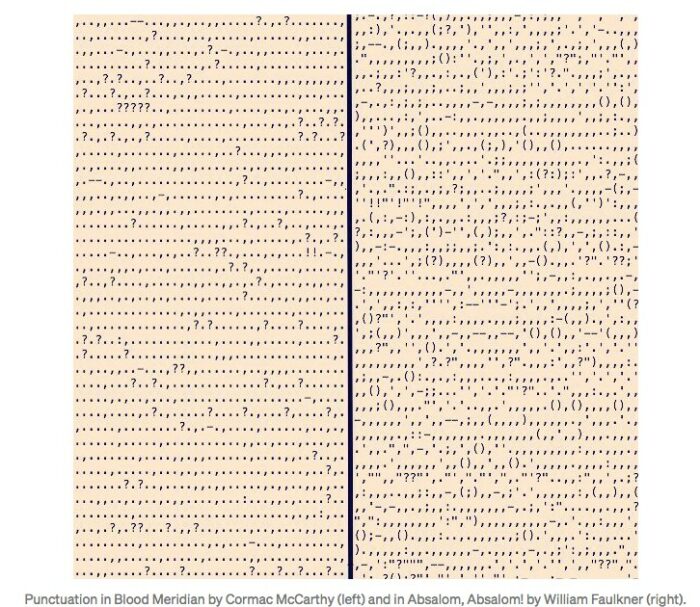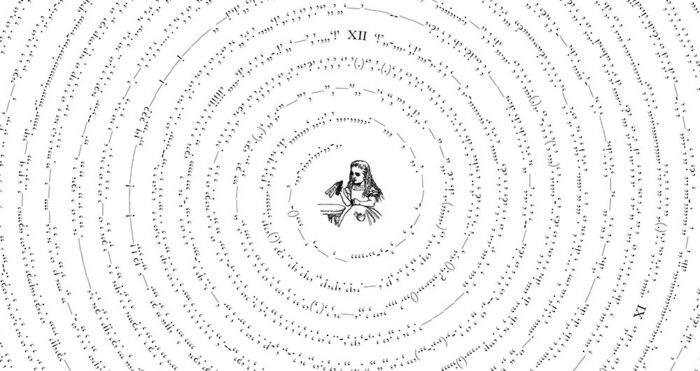Used for the Name of a Work of Art Punctuation
by Pisana Ferrari – cApStAn Ambassador to the Global Village
Punctuation has a very long history, often marked by divisiveness. The introduction of each new marking was met with suspicion, disdain, and sometimes fifty-fifty with violence (aye! read about the 1905 "Comma strike" by Moscow printers in our article at this link). As The states author Mary Norris writes, in her very entertaining "Confessions of a Comma Queen", "Punctuation is a deeply conservative club. It hardly ever admits a new member". Punctuation marks can fall out of favour at the drop of a hat, so to speak, and many have never even defenseless on. More than recently, it is the lack of, or its "misuse", that is creating alarm. The age of online communication has brought about a radical reinvention of punctuation, in ways that transgress the boundaries of what is usually divers as "good grammar". This has sparked concerns about the hereafter of formal language and become a hot topic of word (see also our article on this topic at this link). All authors, whether of literary classics or more contemporary works, have their own punctuation idiosyncrasies, of course. Extrapolating punctuation from literary works tin can reveal a lot of data about authors' writing styles and habits, as well as other interesting characteristics. In 2016 Adam J. Calhoun, a Postdoctoral Fellow at the Princeton Academy Neuroscience Institute, presented a data visualization of a number of novels stripped of all words in an commodity for Medium titled "Punctuation in Novels". "Writing can be cute because of the words an author chooses to use: but it can also be beautiful because of the choice of punctuation", Calhoun says. "Why not print out all of the punctuation of Pride And Prejudice and cover your walls?", he adds. Calhoun says he was inspired by the work of Nicholas Rougeux, a designer and creative person from Chicago, who decided to see what it would expect like if all the words were removed from classic pieces of literature. The upshot is a series of wonderful posters where punctuation marks form ane continuous line of symbols, in the society in which they appear in the text, that swirl into a spiral. The posters tin can be viewed (and bought) at this link. Run across a detail of his Alice in Wonderland below (paradigm due north.two). And here is a comparison between authors Cormac McCarthy and William Faulkner'due south punctuation, from Calhoun's article (image n.ane).

Epitome 1. Photo credit: "Punctuation in novels", Adam J. Calhoun, Medium, Feb 15, 2016
Link: https://medium.com/@neuroecology/punctuation-in-novels-8f316d542ec4
What punctuation tin tell united states of america about an writer
Calhoun wondered what his favorite books would expect similar without words. "Can you lot tell them apart or are they all a-mush?", he asked himself. The differences were stark. "Absalom, Absalom! is wild; moreover, one might say, it is statements, within statements, inside statements: who doesn't honey that?", he says. Especially when placed next to a novel with a more simplified prose, Blood Pinnacle, past Cormac McCarthy. For his information visualization project Calhoun's analysed nine different literary works, from dissimilar periods. This allowed him not only to run across which punctuation marks are used the about, or the least, but also to compare which authors had the longest words or shortest words per sentence. Faulkner beat them all in terms of longest words per sentence, says Calhoun. The shortest words per judgement are in Hemingway's "Cheerio to Arms". "How refreshing and wild that must have been", he says, "near no commas, only sentences, dialogue". More than recently Calhoun has besides transformed the punctuation into a heatmap. Periods and question marks and assertion marks are red. Commas and quotation marks are greenish. Semicolons and colons are blue. Bright, check out his blog.
Curious to come across how your own texts looks when stripped of all merely punctuation? Try this link
Author and announcer Clive Thomson has adult a web tool that lets you "spy" your hidden literary way, equally he describes it. In a recent article for Creators' Hub titled "What I Learned Well-nigh My Writing By Seeing But The Punctuation", he says he processed six of his latest articles for Medium and that these reveal a number of interesting things: that he actually loves to employ m-dashes for dramatic emphasis, that he does not oftentimes use dialogue or quotes and that there are surprisingly few double-quotation marks. His oddest quirk? He occasional deploys super-exuberant parenthetical statements, ones that consist of several sentences, each of which ends in an exclamation point. He as well writes very long parenthetical statements: ane contains a hefty fourteen pieces of punctuation, including an internal colon: ( " ' — " . — . , ' , : , , . )! If you want to try it out on your own works Thomson suggests that for all-time results yous should input about half-dozen,000 to viii,000 words of text. We tried the tool ourselves, and processed several articles from our blog for the cover photo of this article. It is amazing to come across how many commas (likewise many?) and inverted commas in that location are, and that there is non a single semi-colon…. "It's also fun to apply this tool, says Thomson, "to crunch prose from famous books". He tried out the opening pages of several novels, and one affair he could spot quickly is which passages were based heavily in dialogue and which were based more on description and narrative.

Image 2. Photo credit: "Between the words. Exploring the punctuation in literary classics"
Nicholas Rougeaux, item of "Alice in Wonderland" – https://www.c82.net/piece of work/?id=347
Sources
"What I Learned Near My Writing Past Seeing Only The Punctuation", Clive Thomson, Creators' Hub, Oct eight, 2021
"Punctuation in novels", Adam J. Calhoun, Medium, February 15, 2016
"Here's What Archetype Books Look Like Without Words", Nicholas Rougeaux, Wired, January 19, 2016
"Betwixt the worlds. Exploring the punctuation in literary classics", Nicholas Rougeaux blog
Embrace photo
A series of cApStAn web log articles processed by the spider web tool created past Clive Thomson — https://only-the-punctuation.glitch.me/ — which strips away words and leaves simply puntuation, graphic elaboration by Graphillus.
Meet also our other articles about punctuation
Exclamation marks accept become part of a social-media specific dialect to prompt humour and blasphemy
Making the example for semicolons, the saddest, about unfairly represented victim of the current regime of punctuation austerity
In the era of internet language punctuation is morphing into new shapes, acquiring new tasks, and new meanings
Is the apostrophe doomed to die? As language and norms evolve the futurity of this punctuation mark looks dour
A very entertaining article near the "Oxford comma", and why we recommend using information technology
Confessions of a Comma Queen: "a sharply sparkling grammar guide" (Oprah Mag)
Foreign loanwords in English language and the "exotic amuse" of accents
0 Response to "Used for the Name of a Work of Art Punctuation"
Post a Comment